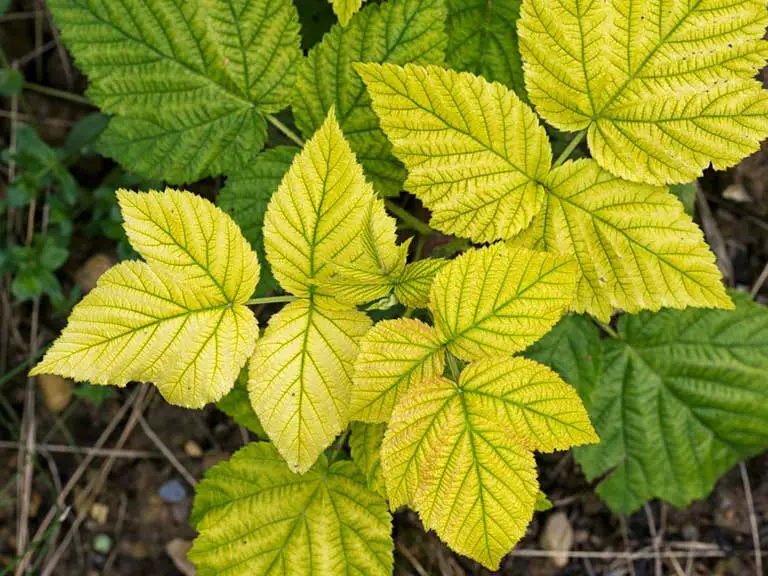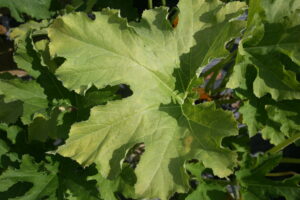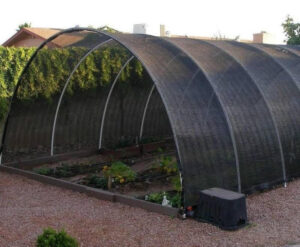Magnesium, a macronutrient found in all plants, is a necessary requirement for several vital plant functions. Thus, a lack of magnesium can pose a serious threat to plant life. In this article, you will learn how to identify a magnesium deficiency and how to remedy the problem.
Why Magnesium is Important
Magnesium is important to plant life because of the role it plays in the production of chlorophyll, which gives plants their green color and makes photosynthesis possible. In addition, magnesium is necessary for vital functions such as cell division, plant respiration, nitrogen metabolism, water uptake, and a number of other critical plant processes.
Two Main Causes of Magnesium Deficiency
There are two primary causes for this macronutrient deficiency. The first cause, and also the most common, is a nutrient (or mineral nutrient) imbalance in the soil. For example, there may be adequate magnesium in the soil, but when there is excessive potassium, the plant roots will take up the potassium, not the magnesium. Thus, the cause of the unhealthy plant would be a nutrient imbalance, in this case, too much potassium and not a lack of magnesium in the soil.
This article contains affiliate links. If you make a purchase using one of these links, I will receive a very small commission at no additional cost to you, and it will help me maintain this website. Rest assured, I only recommend products I actually like!
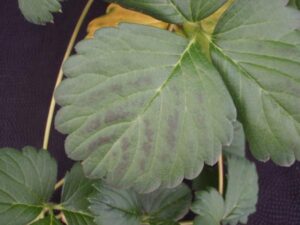
The second and less common cause is an actual lack of magnesium in the soil. The plant is able to take up the nutrient, but it is simply not present in the soil.
It is important to identify the actual cause of the problem before attempting a solution. You can test for magnesium, but it will require sending a sample of your garden soil to a lab. An easier and quicker method is to use a soil test kit (this is the one I use) to determine if there is an NPK (nitrogen, phosphorus, potassium) imbalance. (You can learn more about NPK in this helpful article.)
Some plants that are more susceptible to a magnesium deficiency include tomatoes, roses, raspberries, rhododendrons, apple trees, and grape vines.
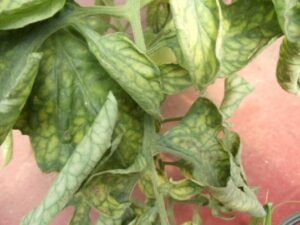
How to Identify a Magnesium Deficiency
In addition to testing the soil, you can determine if there is a magnesium deficiency by observing visual clues provided by the plant. Because the nutrient is a part of chlorophyl production (i.e., what gives plant tissue their green color), the most readily observed sign is the yellowing of the space between the veins in the leaves. This symptom is called interveinal chlorosis because the leaf tissue turns yellow while the veins remain green.
Interveinal chlorosis will appear in older leaves first because the magnesium will travel up the plant to aid in developing new growth. As chlorophyll is diminished, some leaves may develop purple, red, or brown hues.
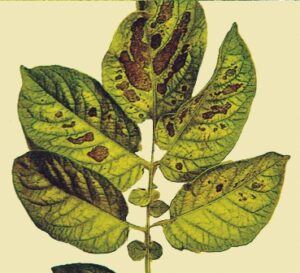
Other conditions, like a lack of nitrogen, over or underwatering, leaf blight, etc., can also cause leaves to turn yellow. In these instances, however, the veins will yellow along with leaf tissue.
If not treated, magnesium deficiency will eventually cause leaf tissue to die, further resulting in diminished plant growth and crop production and, ultimately, plant death.
How to Treat Magnesium Deficiency
After you have properly diagnosed a magnesium deficiency in your soil, you can easily and inexpensively remedy the problem by adding Epsom salt or magnesium sulfate via foliar feed. Be sure the label says magnesium sulfate and that there are no other ingredients listed, like essential oils, fragrance, etc.
To treat, mix one gallon of warm water with one to two tablespoons of Epsom salt in a sprayer (this is the one I use). Apply the solution to the plant foliage in the early morning when the leaves’ pores are open. If you wait until the sun is out, it may cause sun scald or scorching. Alternatively, you can apply the solution directly to the soil as you would when watering your plants, although foliar feeding is best.

Too Much Magnesium
Most garden soil contains an adequate amount of magnesium, so adding more won’t solve the problem; it may make matters worse. For example, too much magnesium will prevent the uptake of calcium, a problem that can occur when gardeners add magnesium, often in the form of Epsom salt, to prevent or treat blossom end rot in vegetables like tomatoes and peppers. Blossom end rot is actually caused by a calcium deficiency. Adding magnesium can actually exacerbate the problem. (You can read more about the controversy associated with treating blossom end rot with Epsom salt in this helpful article.)
Besides blocking the uptake of calcium, excess magnesium can contaminate ground water over time. Again, testing the soil is a must before attempting to solve the problem by adding more magnesium.
How to Prevent Nutrient Deficiencies
One of the best ways to prevent nutrient deficiencies is to apply compost to your garden. Compost provides the soil with rich, organic material that is packed with vital micro and macro nutrients, including magnesium. (You can learn what to add and what not to add to your compost pile in this helpful article.)
Now that you know how to identify and treat a magnesium deficiency in plants, you are better equipped to have a successful garden and an abundant harvest!
Thank you for reading this article! If you found it interesting or helpful, please consider sharing it with others via email and social media!
